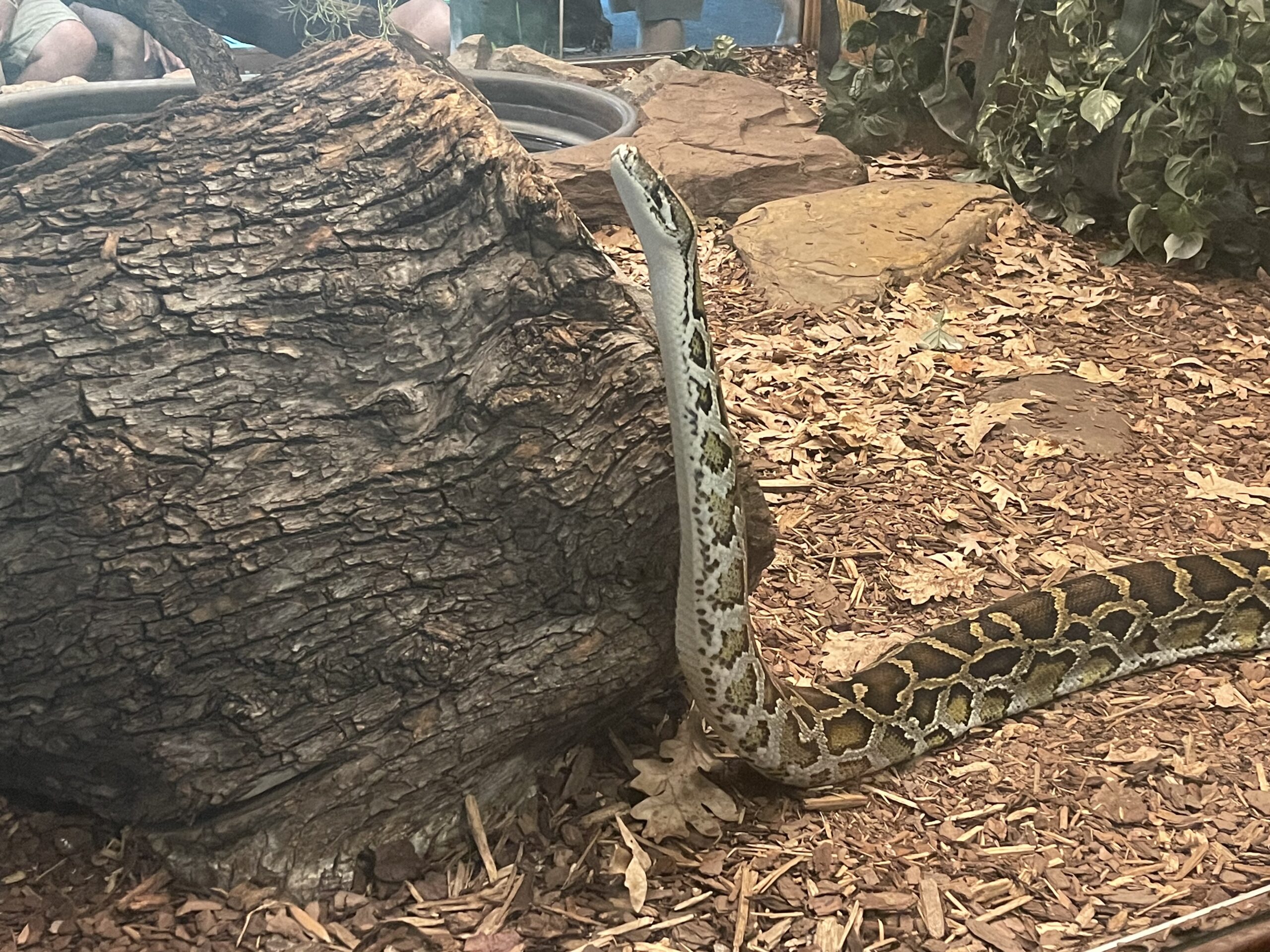Summary of Amphibians & Reptiles: Similarities & Differences:
This content explains the differences between ectothermic animals, specifically reptiles and amphibians. It mentions that ectothermic animals rely on their environment for body temperature regulation. It points out that reptiles have scaly skin made of keratin, while amphibians have permeable skin that is kept wet. Additionally, it mentions that reptile eggs have shells, while amphibian eggs do not. It also notes that some snakes are ovoviviparous, meaning their eggs are held and hatch inside the mother’s body, making the young appear to be born alive. Amphibians are studied as indicators of ecosystem health due to their ability to absorb chemicals, including harmful ones, through their skin.
Summary:
– Amphibians and reptiles are ectothermic animals, relying on their environment to regulate their body temperature.
– While both groups lay eggs, amphibian eggs lack outer shells, while reptile eggs have papery or leathery shells.
– Reptiles have scaly skin made of keratin, while amphibians have permeable skin that allows them to absorb oxygen and water.
Amphibians & Reptiles: Similarities & Differences
Amphibians and reptiles are two fascinating groups of animals that share some similarities but distinct differences. In this article, we will explore the unique aspects of these extraordinary creatures and delve into the wonders of their similarities and differences.
Let’s begin by addressing a misconception about amphibians and reptiles. Both are often described as “cold-blooded” animals, but a more accurate term is “ectothermic.” EUnlikemammals and birds, ectothermic animals do not generate their heat. Instead, their body temperature is dependent on the environment. So, while we humans sweat to cool ourselves off during hot summer, an amphibian or reptile may need to seek cooler areas like shady spots or underground caves.
Now, let’s uncover some fascinating similarities between these two groups. First and foremost, both amphibians and reptiles lay eggs. However, there is an intriguing difference in the eggs themselves. Amphibian eggs lack a protective outer shell, making them vulnerable and requiring a moist environment for survival. In contrast, reptile eggs possess papery or leathery shells, protecting the developing embryo. It’s worth noting that some reptiles, such as certain species of snakes, are ovoviviparous. This means that the eggs are held and hatch inside the mother’s body, resulting in the young appearing to be born alive.
MoThey is moving on to another crucial characteristic – body coverings. Reptiles, well-known for their scaly skin, possess scales or scutes made out of a protein called keratin, similar to our hair and fingernails. Although reptile scales may appear wet or slimy, they are, in fact, dry to the touch. Depending on the species, these scales can vary in texture from bumpy to smooth. On the other hand, amphibians possess permeable skin that must stay moist. This unique adaptation allows them to absorb oxygen and water directly through their skin. However, this permeability also means that amphibians can absorb chemicals and toxins from their environment. Because of this sensitivity, scientists often study amphibians as indicators of their ecosystems’ health and environmental changes.
The differences between amphibians and reptiles extend even further. For instance, their respiratory systems diverge. Reptiles breathe through lungs, similar to mammals, while amphibians possess gills as tadpoles and transition to lungs as they metamorphose into adults. This dual-respiratory ability of amphibians allows them to exploit aquatic and terrestrial ecosystems during their lifecycles.
Interestingly, their reproductive methods also differ. Amphibians typically undergo external fertilization, where the female lays eggs and the male fertilizes them externally. On the other hand, reptiles often engage in internal fertilization, with the male depositing sperm inside the female. This variation in reproductive strategies has led to diverse courtship behaviors and mating rituals in each group.
Furthermore, amphibians and reptiles display contrasting behaviors when it comes to their choice of habitat. Amphibians are often associated with water environments, requiring at least a portion of their lives in aquatic habitats. This dependency on water is evident in their reproduction and the need for moist skin. Reptiles, although some species inhabit aquatic environments, predominantly occupy land habitats. Their scaly skin helps them retain moisture and adapt to dry conditions more effectively.
IRegardingdiversity both amphibians and reptiles boast an incredible range of species. Amphibians include frogs, toads, salamanders, and caecilians, while reptiles encompass turtles, snakes, lizards, and crocodilians. The sheer variety of adaptations within these groups is awe-inspiring. From the incredible jumping abilities of frogs to the remarkable camouflage of chameleons, the world of amphibians and reptiles is a treasure trove of evolutionary wonders waiting to be explored.
In conclusion, while amphibians and reptiles share some similarities as ectothermic animals, their unique characteristics set them apart. From the difference in egg structure to variations in body coverings, respiratory systems, reproductive methods, and habitat preferences, these two groups offer many fascinating aspects to discover and appreciate. So, whether you find yourself fascinated by the vibrant colors of a poison dart frog or in awe of the majestic movements of a snake, take a moment to appreciate the beauty and complexity of both amphibians and reptiles in the natural world.

